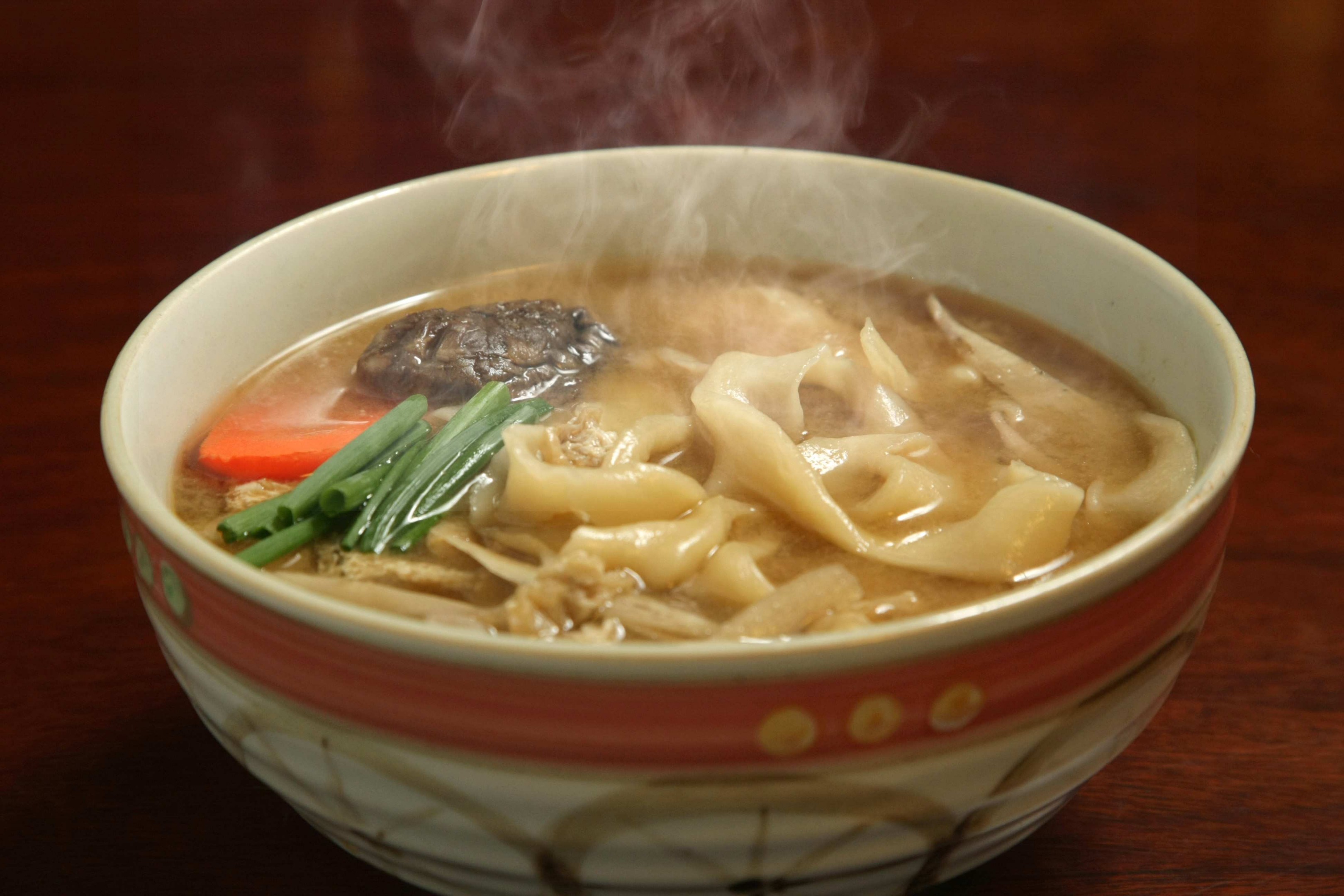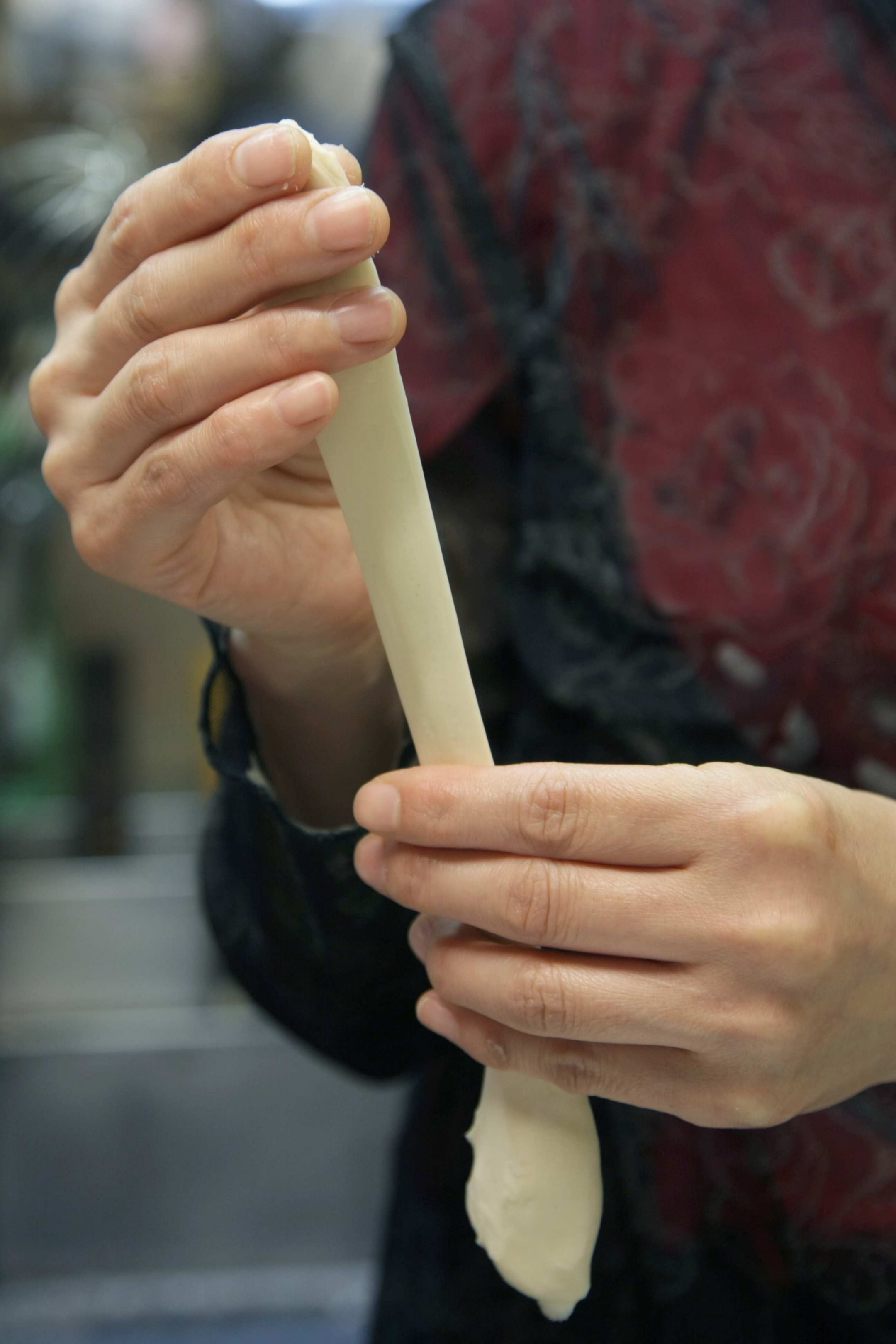

- Foods
Dangojiru (Dumpling Soup)
Photography/MIYAJI Yasuhiko
A Taste of Hometown
There are many styles of Dangojiru. The shape of dumplings, vegetables to be used, and dashi broth – the tradition of each family and community create “the taste of Oita.”
Dangojiru is Oita’s “Taste of Hometown”. It is basically a home cooked meal of dumplings and vegetables simmered in miso-based soup, made possible with great Shiitake mushrooms and Iriko (dried baby sardines) broth specific to Oita. It is particularly delicious during the Satoimo (taro roots) season, where distinctive dumpling texture goes exceptionally well with it.
By the way, “Dango” confuses people from other parts of Japan. Normally when you hear “dango”, it is dumplings made into round shape with kneaded and rest flour dough. However in Oita, “dango” refers to flat rectangular sticks.
There was a researcher of stone bridges who heard about “Dango Bridge” in Yoshino of City of Oita and went for a visit thinking it is an arched stone bridge looking like a circle with the reflection of the water, but he could not find one like that. So he sought a guide from a local resident, then he found a submerged bridge with thin and flat stones piled up. The “Dango” was in fact flat in Oita.
However, in some parts of Oita, they call Dangojiru “Houchou-jiru”. According to legend, Sourin Otomo used to love abalone guts. One day, they were not available, so his servants kneaded flour to make it look like guts, boiled and served to Sourin, which he ended up loving. Since then, people started calling this dish “Houchou”.
However, the history of “Houchou” is actually much older. The noodles in Japan is very much influenced by China, and they were passed over during Nara to Heian era. One of them was Houtou, and people think it gradually changed its name to “Houchou”.
In fact, there is a famous local cuisine of Yamanashi Prefecture called “Houtou”, which is very similar to Oita’s Danngojiru. “Houtou” in Yamanashi and “Houchou” in Oita are like brothers.
There is another specialty of Oita called “Yaseuma” which is kneaded and boiled, and if served with dipping soup it will be called “Houchou”. There are other areas that serve the Dangojiru with Dango just as people would imagine (in round shape). Lots of mystery remain, and you can’t just end this story.

“Dango” in Oita refers to dumplings in flat rectangular stick shape.

